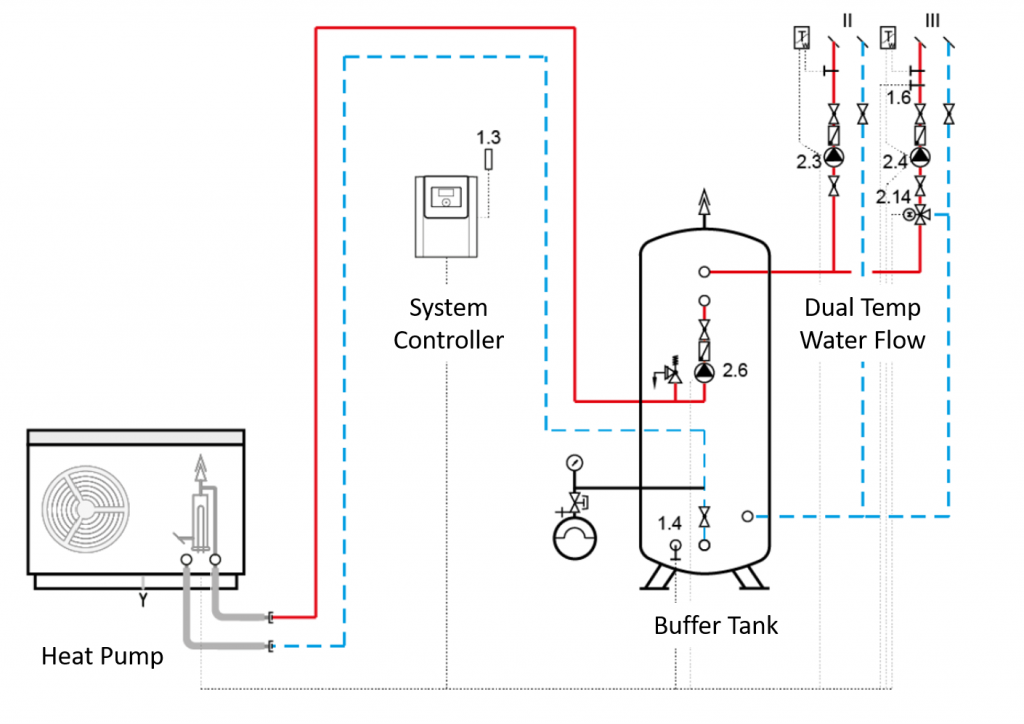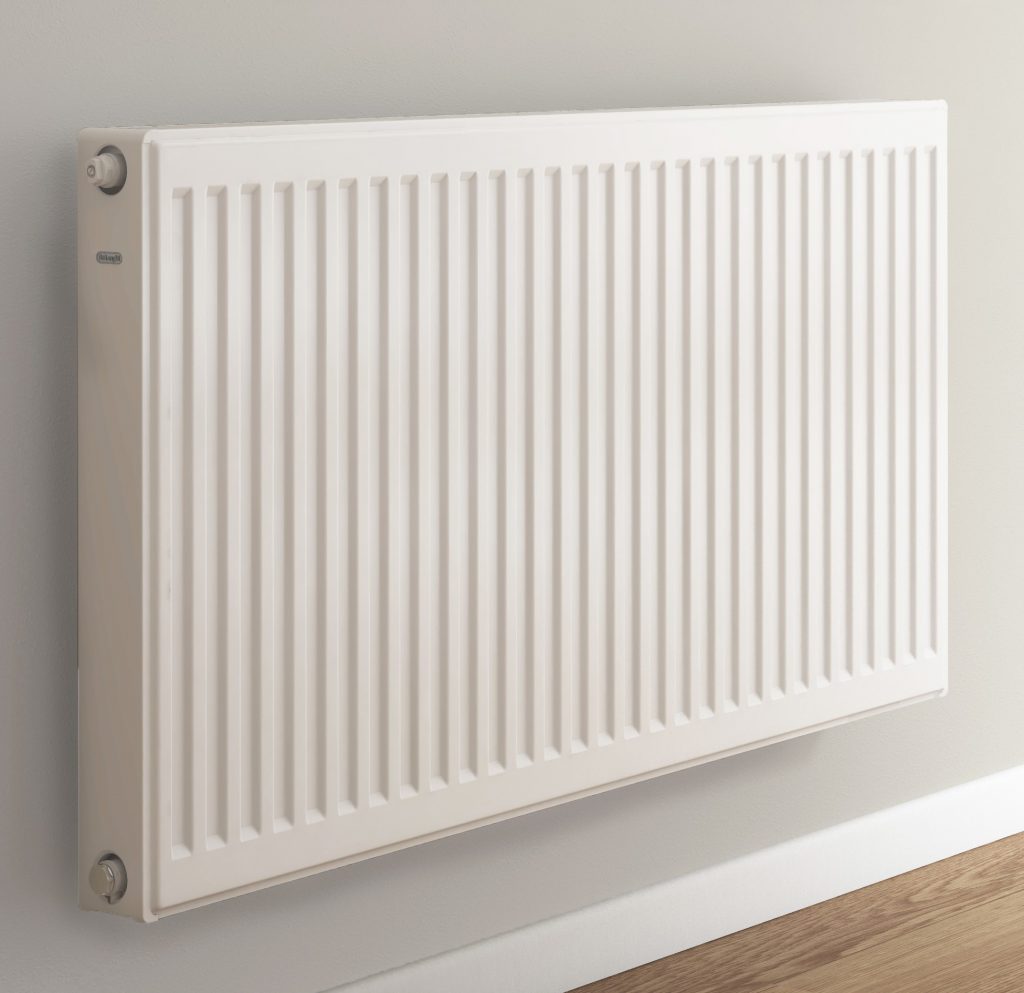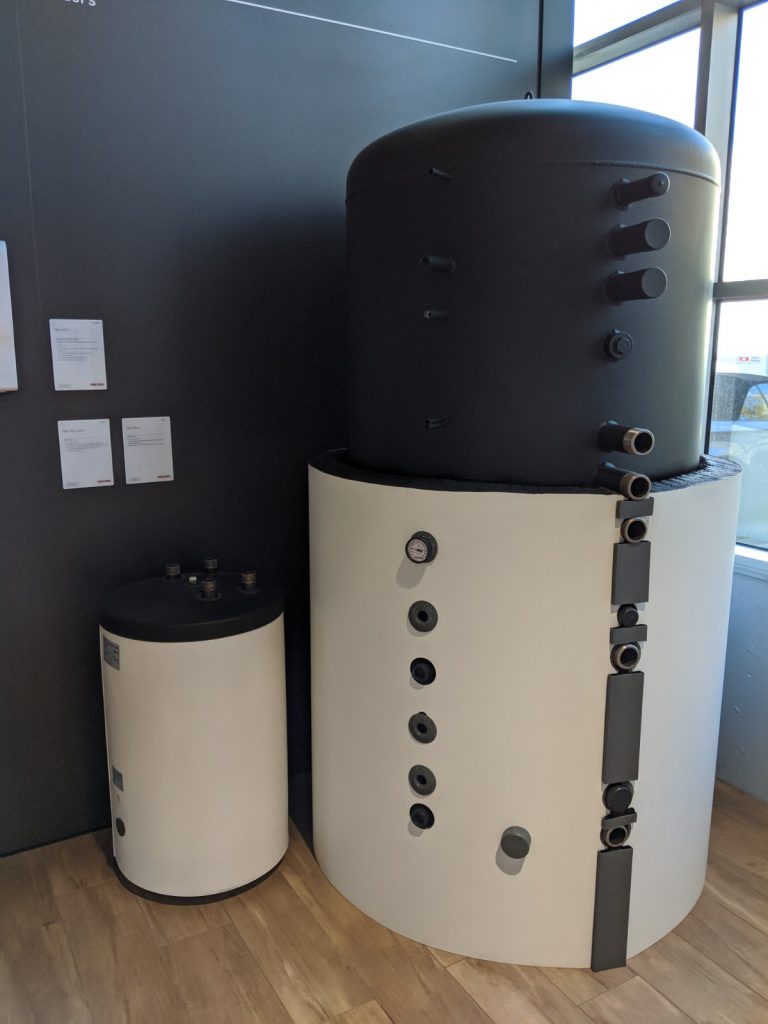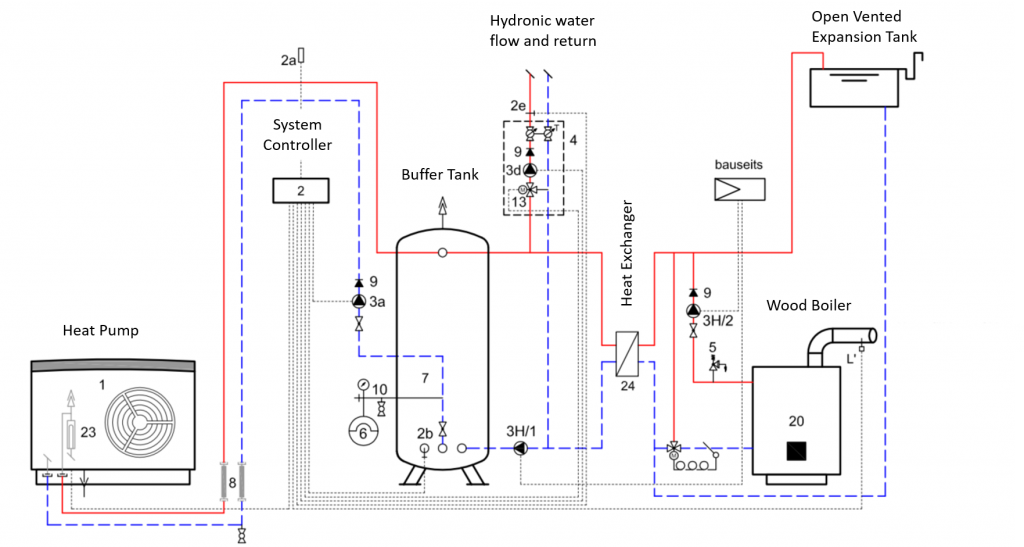
Do I need a buffer tank?
A buffer tank is recommended for a heat pump hydronic system for these reasons:
- Hydraulic separation for hydronic systems to decouple the flow rates between the heat pump and hydronic circuit
- Additional hot water to assist the evaporator defrost cycle
- Prevent short cycling which could be caused by insufficient water volume from room zoning
- Additional thermal storage of heat produced by heat pumps using daytime solar power
- Additional water volume for dual heat source systems such as heat pump and wood boiler
Hydraulic Separation
Hydraulic separation involves separating the water flow between:
- Heat pump and buffer tank
- Buffer tank and hydronic circuits
It is particularly important where you have more than one hydronic water circulating pump for room zoning.
Optimal Flow Rates
Put the buffer tank at the centre of your heat pump hydronic system. The water flow rate between the heat pump and buffer tank can now be optimised. Water can flow at variable rates through your hydronic circuits.
Turn your radiator panels, convectors or underfloor circuits up, down or off without affecting the optimal water flow rate through your heat pump heat exchanger.

Defrost Cycle
The buffer tank provides additional hot water to assist the evaporator defrost cycle. This occurs periodically with air sourced heat pumps when the outside air temperature falls below 7 degrees.
In defrost cycle, the heat pump directs its heat through the evaporator fin coils to clear the frost build-up. This allows air to flow freely again through the coils for heat to be effectively extracted.
However, the defrost cycle will also cool the hydronic water for a few minutes. Therefore, a large hot water volume is needed to provide sufficient heat to counteract this.
Short Cycling
A heat pump is a mechanical machine and like most, it wears more with excessive starting and stopping.
If the water volume in the hydronic system is too low, the heat pump will heat what is available quickly and stop. It will then need to restart again soon after the small amount of heat energy is transferred inside.
This can lead to a shorter operating life, particularly with hydronic systems that have room zoning.
Correct Buffer Tank Size
Install a buffer tank correctly sized to provide sufficient water volume to give the heat pump a good run. There needs to be sufficient water volume in the hydronic system to prevent short cycling.
Contact Hydrosol to advise you on this. It will be part of your hydronic heat pump system design.
Also, the temperature of the flow water in both heating and cooling modes will be more consistent.
Thermal Storage
In southern, inland or alpine regions of Australia, creating high thermal mass within the building envelope is an important consideration.
Water is an excellent store of thermal energy. Therefore, consider adding more water to your hydronic system with a larger buffer tank.
The additional thermal mass of the water helps stabilise and balance your indoor temperature throughout your house.
Off Grid
This is more important if you are going off grid or have a lightly constructed house with low thermal mass. Therefore, increase the size of your buffer tank to create a thermal battery (see below).
Solar Power Utilisation
Also, consider adding thermal storage if you are looking for greater utilisation from your solar system. Power your hydronic heat pump during the day to create a store of hot or cold water. Then use it to heat or cool your house during the evening.
Heat Pump Thermal Battery
If your house is large and you have solar power, then choose a larger buffer tank to create a thermal battery for your heat pump hydronic system.
They are available in 75, 100, 200, 400, 700, 1000 and right up to 1500 litres.
Choose a thermal battery if you are planning an off-grid house.
For most domestic applications, we recommend buffer tank sizes of at least:
- 75 litres for radiator panel systems with heating only
- 100 litres for underfloor and fan coil convector systems with heating and reverse cycle cooling


Dual Heat Source Systems
Consider a dual heat source system such as a heat pump and wood boiler if you have a plentiful wood supply. This makes sense if you are living on a farm or going off-grid and fire wood is freely available. You may also have a fireplace or flue wetback to utilise some of your fire heat for hydronic heating.
The heat pump will stand by if the wood boiler or wetback are producing sufficient heat. The heat pump may just augment the heat at times. In summer, the heat pump can reverse to provide cooling with the boiler or wetback switched off.
Install a larger buffer tank if you have a hydronic system with dual heat sources. Contact Hydrosol to advise you on the appropriate size.
